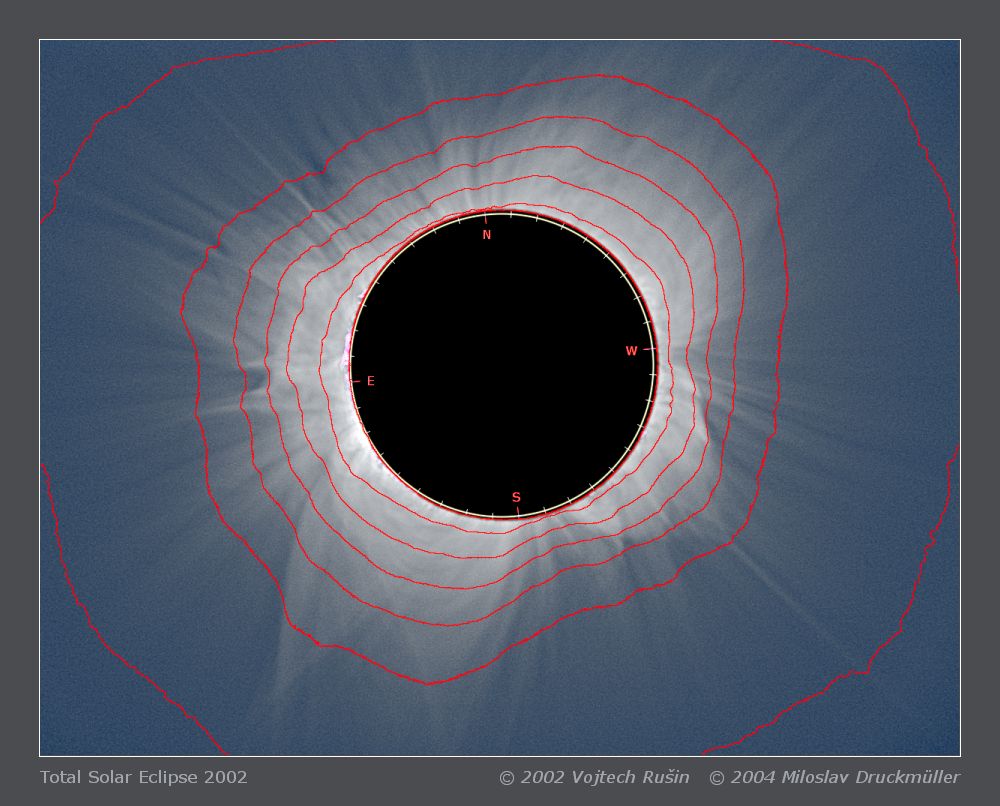| Image | Se2002m_cor_iso.jpg |
| Date | 04. 12. 2002 |
| Time | Second contact: 06:18:26 UT, third contact 06:19:34 UT
Eclipse duration 1 min 8 s |
| Place | South Africa, Messina, High School Eric Louw |
| Coordinate | 30° 00' E, 22° 23' S, altitude approx. 1500 m |
| Conditions | Good, in the end of totality thin clouds |
| Optics | Zeiss 10/1000 mm |
| Resolution | 6.48 arc sec / pixel (image on this Web page) |
| Film | Fujicolor Reala 100 |
| Processing | 16 different images were used for image creation. Images were aligned by means of phase correlation technique and then processed using Corona 3.0 software. Isolines and final processing were done by ACC 6.0 image analyser.
Image processing by Miloslav Druckmüller |
| Scanner | Nikon Super Coolscan 4000 ED (4000dpi, 16× multisample) |
| Software | PhaseCorr 3.0, Corona 3.0, Sofo ACC 6.0 |
| Note | Yellow circle inside the Moon represents exact position of the photosphere edge. |
| Orientation | Image must be rotated 6.4° clockwise to achieve the standard orientation (N top, E left) |
| Copyright | © 2004 Vojtech Rušin, Miloslav Druckmüller |

